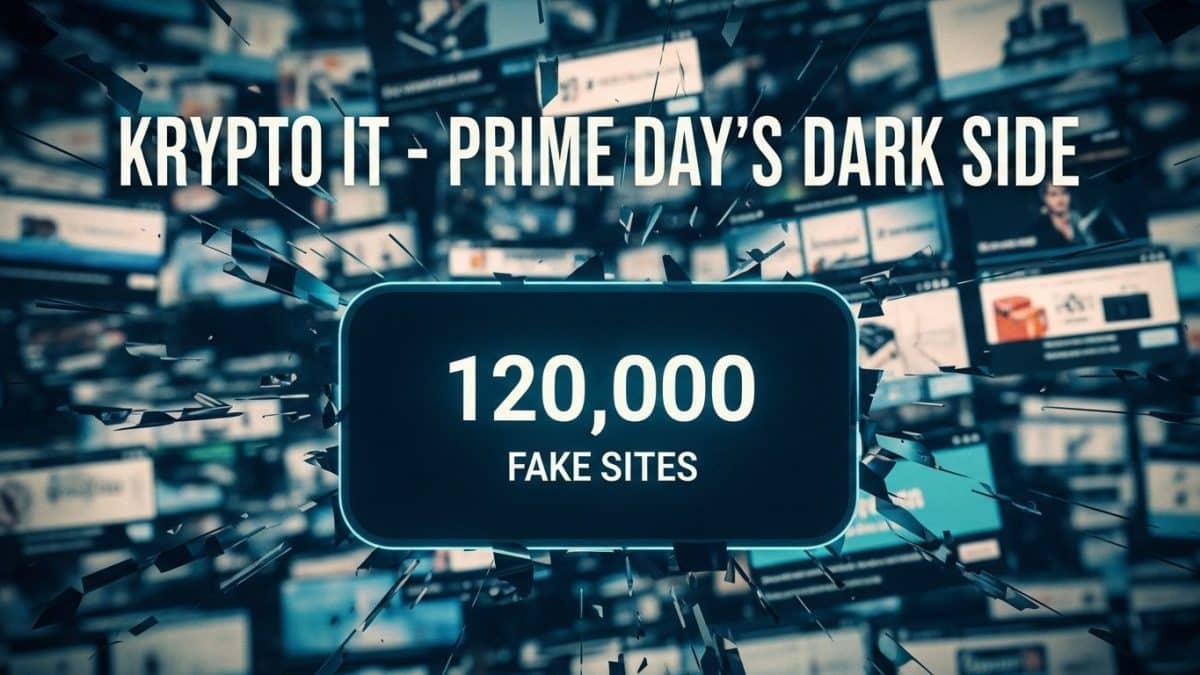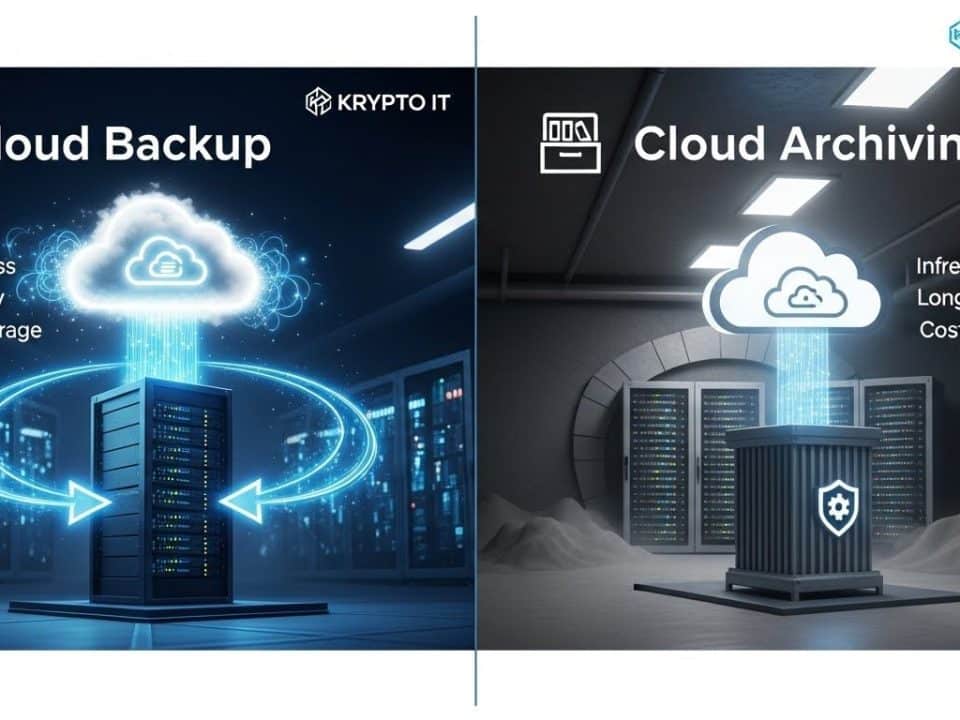
The “Oops!” Factor: Common SMB Cyber Blunders
July 6, 2025
M&S Confirms: Social Engineering Led to Ransomware Attack
July 10, 2025How Cybercriminals Exploit Shopping Frenzy with Deceptive Websites
Amazon Prime Day is one of the biggest shopping events of the year, a frenzy of deals and discounts that draws millions of eager consumers. For businesses, it’s a period of heightened activity and potential sales. However, this excitement also creates a prime (no pun intended) opportunity for cybercriminals. Recent reports indicate an alarming surge in fraudulent activity, with over 120,000 new fake Amazon-related domains registered just ahead of Prime Day 2025. These deceptive websites, often paired with convincing phishing emails, are designed to lure unsuspecting shoppers into traps, stealing their credentials, financial information, or installing malware.
For Small and Medium-sized Businesses (SMBs) in Houston, this phenomenon isn’t just a concern for your employees as shoppers; it’s a direct threat to your business if your staff fall victim on company devices, or if their compromised personal accounts (using reused passwords) lead to a breach of your corporate data.
The Anatomy of an Amazon Prime Day Scam
Cybercriminals are sophisticated, leveraging the hype and urgency of shopping events to maximize their illicit gains. Here’s how these scams typically unfold:
- Massive Scale of Fake Websites: Threat actors register thousands of domains that closely mimic legitimate Amazon URLs. These might include subtle misspellings (e.g., arnazon.com, amaz0n-sale.com), unusual domain endings (like .top, .online), or extra characters and hyphens.
- Highly Convincing Phishing Emails/Texts: These fake websites don’t act alone. They are typically paired with highly convincing phishing emails, text messages (smishing), or social media ads designed to create urgency and fear. Common lures include:
- “Refund error” or “Account suspended” notifications.
- “Unusual login activity” alerts.
- Fake Prime membership renewal warnings, often claiming an “unexpected price” increase and including a “cancel subscription” button.
- “Too good to be true” deals on high-demand products.
- Exploiting Emotional Triggers: Scammers leverage the excitement of Prime Day deals and the fear of missing out (FOMO), combined with the anxiety of account issues, to pressure victims into clicking links without proper verification.
- Credential Harvesting & Malware Delivery: Once a user clicks a malicious link, they are taken to a fake Amazon login page that often looks alarmingly legitimate, sometimes even including secure-looking padlock icons and HTTPS. If the user enters their Amazon credentials or payment information, it’s immediately stolen by the cybercriminals. In other cases, the fake sites might prompt users to download “updates” or “necessary software” which is actually malware.
- Payment Fraud: Beyond stealing credentials, scammers also aim to trick customers into making unauthorized payments. This could involve direct bank transfers, gift card payments, or cryptocurrency, which are difficult to trace.
Why This is a Significant Threat for Houston SMBs
While Amazon Prime Day focuses on consumers, the widespread nature of these scams has direct implications for your Houston business:
- Employee Device Compromise: If employees are shopping on company-issued devices (laptops, phones) during work hours, or using corporate Wi-Fi, falling for these scams can lead to malware infections on your business endpoints.
- Credential Reuse Risk: Many employees unfortunately reuse personal passwords for work accounts. If their personal Amazon account credentials are stolen on a fake Prime Day site, these same credentials could be used to access their corporate email, cloud services (like Microsoft 365), or internal systems. This is a classic “credential stuffing” scenario.
- Business Email Compromise (BEC): If an employee’s work email is compromised due to credential theft from a fake site, attackers can use that account to launch BEC attacks against your customers or internal finance department.
- Data Leakage: Stolen personal information from employees (addresses, phone numbers, payment details) can be used for further identity theft, indirectly impacting your business.
- Network Infiltration: Malware downloaded from a fake shopping site can provide attackers with a foothold into your internal network, allowing for lateral movement and more significant breaches, including ransomware.
- Loss of Productivity: Dealing with compromised accounts, malware cleanup, and potential data recovery diverts valuable time and resources from core business operations.
Protecting Your Houston SMB from Prime Day Scams
Proactive cybersecurity measures and continuous employee education are crucial to safeguard your business during peak shopping seasons like Prime Day:
- Emphasize Direct Navigation: The golden rule: always manually type amazon.com (or the official URL for any online retailer) directly into your browser. Never click on links in emails, texts, or social media ads claiming to be from Amazon, even if they look legitimate. If you receive a suspicious email about an account issue or order, open a new tab and go directly to the official Amazon site to check your account.
- Verify URLs Scrupulously: Train employees (and encourage personal practice) to scrutinize URLs for any discrepancies before entering login or payment information. Look for:
- Misspellings (e.g., arnazon.com, amaz0n).
- Unusual domain endings (e.g., .top, .online, .xyz, .biz instead of .com, .org, .net).
- Excessive hyphens or numbers.
- The “https://” prefix and a padlock icon are good, but not foolproof, as even fake sites can acquire these. The domain itself is key.
- Mandate Multi-Factor Authentication (MFA): Make MFA mandatory for all Amazon accounts (personal and business, if applicable) and, critically, for all corporate accounts (email, cloud services, VPNs). Even if credentials are stolen, MFA acts as a vital second barrier.
- Strengthen Email and Web Filtering:
- Deploy advanced email security solutions that can detect sophisticated phishing and spoofing, including those with subtle impersonations.
- Utilize web content filtering and DNS security to block access to known malicious domains and new, suspicious domains often used in scam campaigns.
- Conduct Security Awareness Training:
- Run simulated phishing campaigns that mimic Prime Day scams to test employee vigilance.
- Educate employees on the common tactics (fake deals, urgent account issues, fake subscription renewals).
- Emphasize skepticism, especially around “too good to be true” offers and messages creating urgency.
- Avoid Public Wi-Fi for Shopping: Advise employees to avoid making purchases or accessing sensitive information over unsecured public Wi-Fi networks. If they must, recommend using a reputable Virtual Private Network (VPN).
- Use Credit Cards, Not Debit: For personal online purchases, advise using credit cards, which generally offer better fraud protection and less direct access to bank accounts than debit cards.
- Regularly Update Software: Ensure all operating systems, web browsers, and security software on both company and personal devices are kept up-to-date with the latest patches.
The convenience of online shopping, especially during events like Amazon Prime Day, is a double-edged sword. While it offers incredible deals, it also provides fertile ground for increasingly sophisticated cybercrime. For Houston SMBs, protecting your business means extending your cybersecurity awareness beyond the office walls and into the digital shopping habits of your employees. Krypto IT specializes in equipping businesses with the knowledge and tools to navigate these threats safely.
Don’t let the allure of a deal lead to a costly cyber scam.
Contact us today to schedule a free consultation and ensure your business and employees stay safe from the dark side of Prime Day.




